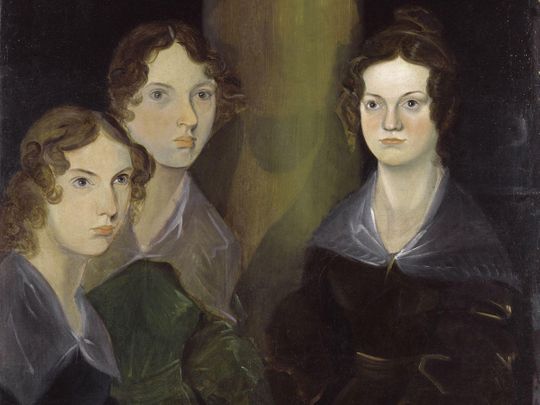
When English author and poet Charlotte Brontë showed her early works to England’s Poet Laureate Robert Southey, in 1836, he wrote to her, stating that despite her talent, “literature cannot be the business of a woman’s life and it ought not to be”.
Click start to play today’s Crossword, where you can identify the works and characters of the Brontë sisters.
It’s a good thing she ignored his advice, because she went on to become one of the most famous women writers of the Victorian era, along with her talented sisters, Emily and Anne Brontë.
The three Brontë sisters grew up quite poor and faced loss and hardship during their younger years. They lost their mother to cancer when she was only 38, and their two older sisters to consumption (or what we know as tuberculosis) when they were mere teenagers. To help their father, a clergyman, all three sisters worked as soon as they were able to, as governesses and teachers, for miniscule pay and long hours. Their experience as governesses, in fact, informed their writing, and shaped the characters of Charlotte’s Jane Eyre and Anne’s Agnes Grey.
But before they gained fame, the Brontës faced their fair share of rejection. When their brother could not help their father make ends meet, the sisters decided to write a book of poetry together, hoping to sell it to publishers and earn some money. Poems by Currer, Ellis and Acton Bell was published in 1846, with their pseudonyms, where each name started with their real name’s first letter. The book, however, sold only two copies.
But the sisters were undeterred – they carried on with their work and chores, and met every night around the dining room table to read their work aloud and offer criticism and ideas. Anne reworked a story that would finally become Agnes Grey, Emily wrote her only novel, the masterpiece Wuthering Heights, and Charlotte put down her first novel on paper – The Professor. They packaged up their finished manuscripts and sent them to publishers with their pen names, only to be rejected over and over again.
It was Charlotte’s second book, the beloved classic Jane Eyre, that became an instant bestseller in 1847. In time, Anne and Emily also earned their place in the sun, and when the public began to realise all the three "Bells" could be related, the sisters had to share their true identities (and genders)!
The conservative Victorian public was shocked at the revelation of prolific writers who turned out to be women. On top of that, these very women delved into gritty, unsavoury topics, such as gothic melodrama and the sometimes-violent struggles of an exploitative workplace. The controversy generated even more book sales, and propelled the Brontës to fame and lasting success. Today, all three sisters’ books are immortalised as literary masterpieces, and are considered to be required reading in certain school curriculae.
Which is your favourite Brontë novel? Play today’s Crossword and let us know at games@gulfnews.com.



